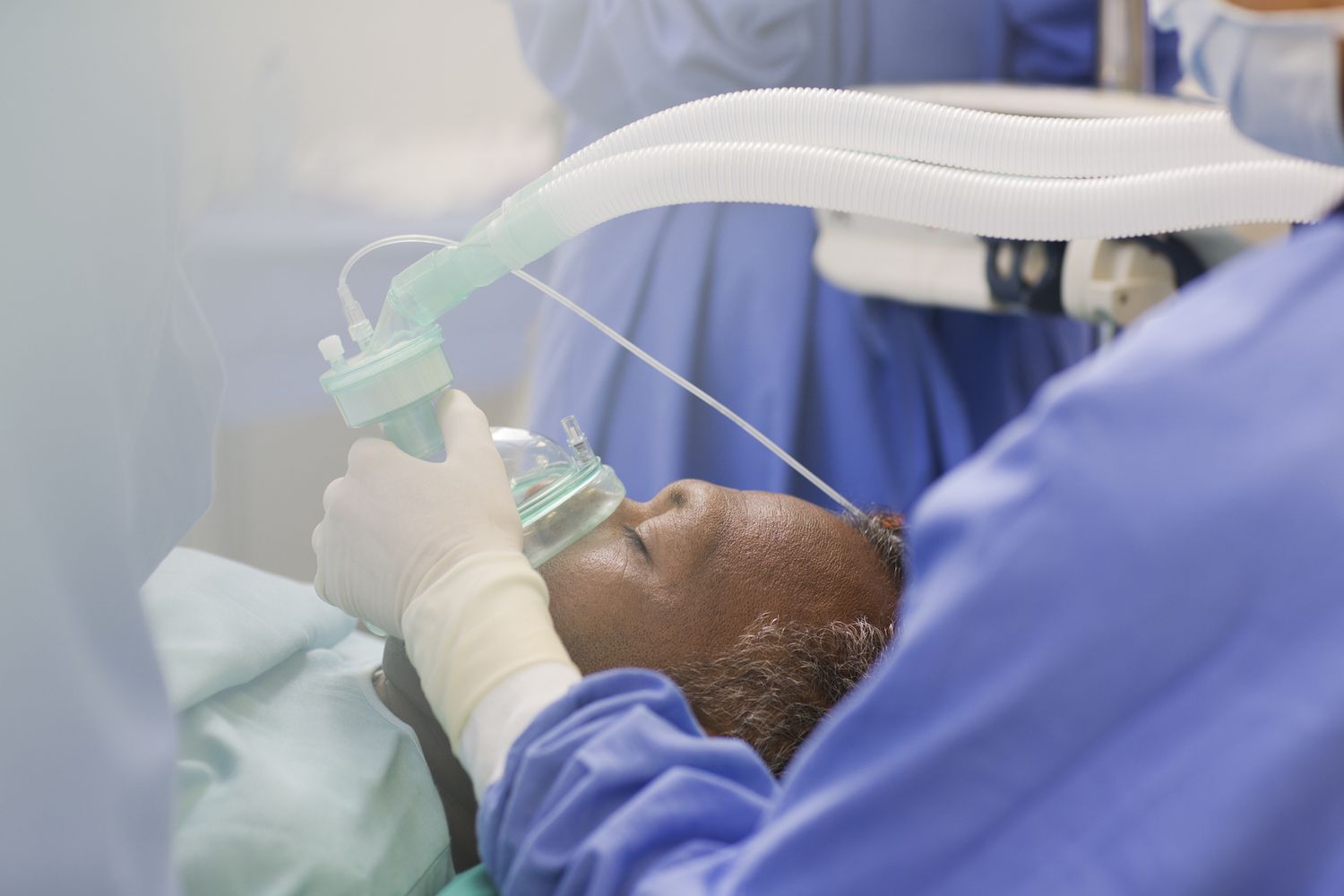
Undergoing surgery, regardless of its scale or complexity, imposes a significant and multifaceted trauma upon the human body. The physical disruption caused by incisions, tissue manipulation, and the necessary administration of anesthesia triggers a highly predictable, systemic inflammatory response. This response is not a complication but rather the body’s innate, critical mechanism for initiating the healing process. Consequently, a certain spectrum of side effects is not merely possible; it is, in fact, an unavoidable aspect of the immediate post-operative experience. These common side effects—chiefly pain, swelling, and fatigue—are direct consequences of the chemical messengers (cytokines) flooding the system as immune cells rush to the site of injury. Expecting a return to baseline functionality without navigating this initial period of discomfort and reduced energy is a fundamental miscalculation that can significantly undermine a patient’s emotional and psychological recovery. Therefore, a successful recovery begins not with the procedure, but with a realistic and grounded acceptance of the body’s necessary, temporary protest.
This response is not a complication but rather the body’s innate, critical mechanism for initiating the healing process.
The management of post-operative pain is a central pillar of early recovery, yet it remains one of the most variable and poorly anticipated side effects. Pain is often complex, involving not just the immediate surgical site but also radiating discomfort caused by muscle spasms, positional strain during the operation, and even nerve irritation. An over-reliance on a single painkiller or, conversely, an extreme reluctance to take medication can both lead to inadequate pain control. Poorly managed pain is not just uncomfortable; it restricts necessary movement, interferes with sleep, and can acutely elevate stress levels, all of which actively hinder the healing process. The goal is a strategic, multimodal approach—often combining narcotics for severe, acute pain with over-the-counter anti-inflammatories—aimed at achieving functional pain relief. This means reducing pain to a level where the patient can breathe deeply, walk gently, and engage in essential self-care activities without excessive agony.
The Nuances of Pain Management: Achieving Functional Relief Over Total Eradication
The body’s initial response to surgical trauma inevitably involves the accumulation of fluid in the affected tissues, manifesting as swelling (edema) and bruising (ecchymosis). This is a natural consequence of increased vascular permeability at the surgical site as blood vessels intentionally leak fluid and immune cells into the area to begin repair. Swelling is often most pronounced in the first 48 to 72 hours and can sometimes extend far beyond the immediate surgical site due to gravity. While often alarming to the patient, it is usually temporary. Strategies such as elevation of the surgical site (where possible), the proper use of compression garments, and the intermittent application of cold compresses are key to mitigating the severity and accelerating the resolution of this common side effect. Bruising, caused by blood leakage from damaged capillaries, will slowly change color—from deep purple to green and yellow—as the body metabolizes the blood components, a visual timeline that requires patience.
Swelling is often most pronounced in the first 48 to 72 hours and can sometimes extend far beyond the immediate surgical site due to gravity.
A less obvious, yet pervasive, side effect is the profound and often unexpected post-operative fatigue. This fatigue is not simply a feeling of being tired; it is a deep, systemic exhaustion that affects both physical and mental clarity. It is driven by multiple biological factors: the metabolic effort required for tissue repair, the lingering effects of anesthesia, interrupted sleep patterns, and the body’s response to pain medication. Patients must recognize that this exhaustion is a natural signal that the body is diverting massive energy resources toward the internal work of healing. Attempting to push through this fatigue by immediately resuming a normal pre-surgical schedule is counterproductive and can lead to setbacks. The recovery period is defined by the absolute necessity of prioritizing rest, allowing the body the required caloric and energetic reserves to complete its vital repair work.
The Pervasive Drain: Understanding Systemic Post-Operative Fatigue
Beyond the predictable side effects, one must address the spectrum of potential risks that, while less common, demand vigilance and prompt medical attention. Infection at the surgical site is a risk inherent to any procedure involving an incision. Signs to watch for include increasing redness, warmth, tenderness, swelling that increases after the first 72 hours, and any foul-smelling or purulent (pus-like) drainage. A persistent fever is often the systemic indicator that the body is fighting a spreading infection. Similarly, the formation of seromas (pockets of clear fluid) or hematomas (collections of blood) beneath the skin can occur, often requiring drainage by the surgeon to prevent further complications or delayed healing. Recognizing the subtle shift from normal healing symptoms to signs of potential complication is the primary responsibility of the recovering patient.
Recognizing the subtle shift from normal healing symptoms to signs of potential complication is the primary responsibility of the recovering patient.
The risk of Deep Vein Thrombosis (DVT)—the formation of blood clots in the deep veins, usually in the legs—and its potentially fatal progression to Pulmonary Embolism (PE) remains one of the most serious and preventable post-operative complications. Immobility during and immediately after surgery significantly slows blood flow, increasing this risk. Proactive measures are the cornerstone of prevention: the use of Sequential Compression Devices (SCDs) during and immediately after the procedure, early and frequent ambulation (walking), and, for high-risk patients, the use of prophylactic blood-thinning medication (anticoagulants). Patients should be acutely aware of symptoms like calf pain, swelling, warmth, and redness in one leg that are disproportionate to the other, or sudden shortness of breath and chest pain, which signal a potential PE.
The Critical Threat of DVT and Pulmonary Embolism: Prevention Through Mobility
Another frequently encountered, though usually benign, complication stems from the effects of anesthesia and pain medication on the digestive tract, resulting in post-operative nausea and constipation. Anesthesia can temporarily slow or “stun” the normal peristaltic movement of the bowels, a condition known as ileus. Pain medications, particularly opioids, are potent inhibitors of gut motility. Both factors contribute to discomfort, bloating, and constipation. Managing this requires a proactive strategy that integrates hydration, gentle mobility, and dietary fiber intake as soon as tolerated. Stool softeners or gentle laxatives are often prescribed as a preventative measure to avoid straining, which is not only painful but can place undue pressure on the surgical site. Addressing this digestive sluggishness is crucial for overall comfort and a smoother recovery progression.
Managing this requires a proactive strategy that integrates hydration, gentle mobility, and dietary fiber intake as soon as tolerated.
Beyond the visible wounds, the post-surgical period can involve significant changes in sensation around the incision sites. Patients frequently report areas of numbness, tingling, or hypersensitivity (painful sensitivity to touch). These sensations are a direct result of the surgical disruption of fine sensory nerve endings in the skin and subcutaneous tissue. While in most cases these nerves slowly regenerate over many months, leading to a gradual return of normal sensation, the process can be slow and unpredictable. It is vital for patients to understand that this altered sensation is a normal, expected consequence of the healing process and is usually temporary. Persistent, severe, or debilitating nerve pain, however, warrants further investigation to rule out more complex nerve entrapment or damage.
Understanding the Transient Changes in Sensation Due to Nerve Disruption
The process of scar maturation is a long-term side effect of any surgery involving an incision and requires patience and active management. Initially, the incision will be red, firm, and often raised. This is a normal, proliferative phase of healing. Over a period of twelve to eighteen months, the scar should flatten, soften, and fade to a color closer to the surrounding skin. Factors influencing scar quality include genetics, skin tension across the wound, and meticulous post-operative care. Patients can actively improve scar appearance through targeted measures like applying silicone sheeting or gels and rigorously avoiding sun exposure, which can permanently darken the scar. The failure to manage the long-term journey of the scar can lead to hypertrophic (raised) or keloid scars, underscoring that recovery extends far beyond the removal of sutures.
The process of scar maturation is a long-term side effect of any surgery involving an incision and requires patience and active management.
Finally, the psychological impact of surgery and recovery is a profound, yet often overlooked, side effect. The emotional rollercoaster can involve initial euphoria, followed by a period of anxiety, vulnerability, and even “post-op blues,” often peaking around days three to seven. This emotional flux is fueled by pain, hormonal changes, restricted mobility, reliance on others, and the shock of seeing the initial swollen, bruised surgical results. Patients must be prepared for this vulnerability, understand that it is temporary, and secure adequate emotional support beforehand. Acknowledging that the mind, just like the body, requires time and gentle attention to heal is crucial for overall well-being and a positive, sustainable recovery outcome.
The Unspoken Toll: Addressing the Emotional and Psychological Dimensions of Healing
Navigating the post-surgical period is a systemic process; successful recovery depends on proactively managing pain, understanding the natural fatigue and swelling, and diligently watching for subtle signs of serious complications like DVT.
